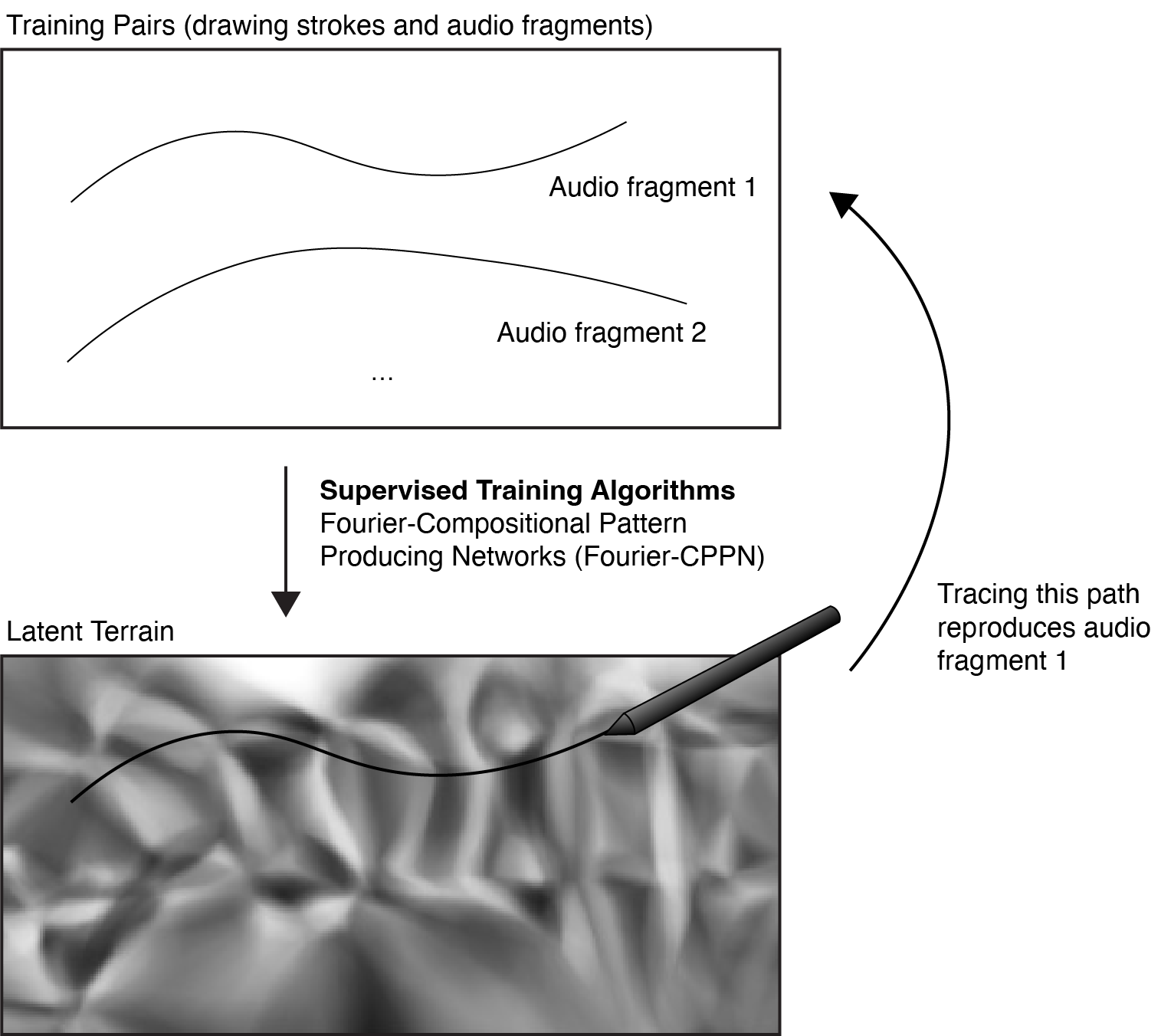Generating Latent Terrains

The tablet interface captures the spatial location of the stylus’s pen tip on the canvas as a pair of coordinates \((x, y)\), and the pressure applied on the canvas as \(p\). We designed a mapping model called Latent Terrain (hereby referred to as the terrain). A terrain is a set of one-to-one mapping between a given pair of \((x, y)\) to an 8-dimensional latent vector \(z\). Therefore, a 2D canvas can be rendered as a plane of latent vectors tiled on each pixel location. When the stylus moves on the canvas, the terrain immediately retrieves a latent vector \(z\) corresponding to the stylus’ \((x, y)\).
We used two algorithmic strategies to generate two terrains, respectively: a Variational AutoEncoder (VAE) (Kingma and Welling, 2013) and a Fourier-Compositional Pattern Producing Networks (Fourier-CPPN) (Tesfaldet et al., 2019). A terrain is fixed after it was generated. For the Fourier-CPPN model, we followed the steps below to obtain a latent terrain, illustrated in the figure below.

The RAVE model was trained on a customized guitar-plucking audio dataset with lower complexity in terms of timbre, playing techniques, and notes. The pre-trained model can be found here: https://huggingface.co/shuoyang-zheng/jaspers-rave-models with file name guitar_picking_dm_b2048_r44100_z8_causal.ts.
- We selected \(18\) audio fragments with sample rate \(44,100hz\) from the training dataset. These audio fragments should cover a diverse range of pitches, timbral qualities, and playing techniques. Each audio snippet was trimmed to have a length of \(151,552\) samples, and encoded into a sequence of latent vectors using RAVE’s encoder. Given that RAVE has a compression ratio \(2,048:1\), each audio snippet was compressed into a sequence of \(151,552/2,048=74\) latent vectors. Now, we have \(18\times 74=1332\) latent vectors.
- We places the \(18\) sequences of latent vectors into \(18\) slightly curved lines, tiled them into a stack of lines (two sequences are shown in the figure above). Then we placed this stack of lines on a 2D plane to cover the entire canvas. Now, each latent vector was assigned a coordinate \((x, y)\) corresponding to its spatial location on the canvas. In this step, the current spatial arrangement of the latent vectors is arbitrary and can have a high degree of freedom, which we suggest as a broad design space to explore in future work.
- The spatial coordinates \((x, y)\) and the latent vector paired with them are used as training data to train a Fourier-CPPN model, which is a supervised learning algorithm that learns to predict a latent vector \(z\) given a pair of \((x, y)\) coordinates.
Kingma, D.P. and Welling, M. (2013) ‘Auto-Encoding Variational Bayes’, in Proceedings of the International Conference on Learning Representations. International Conference on Learning Representations, arXiv. Available at: https://doi.org/10.48550/arXiv.1312.6114.